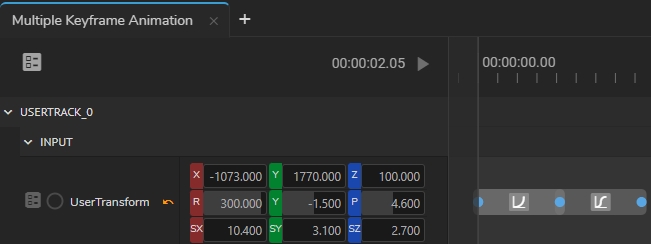Animation Workflow Tips
Properties, Functions, and Function Parameters are subject to the Action module and can be animated/triggered/called through various methods as such:
Adding Keyframe First Approach
Get Value Approach
Adding Keyframes First Approach
Before you begin, it is crucial to know that if you adjust the value through the Properties and Functions module, you must use the Get Value option inside the Actions; otherwise, the new property value will not be registered.
This approach consists of two basic steps: adding the keyframe and then adjusting the value. To set an example, let's assume that you want to move a Camera from Point A to Point B, then Point C.
To do that:

Add the first keyframe to a property you want to animate
Scrub the Playhead to a different frame, add another keyframe and then change the value
Repeat the same process for the third keyframe.
The keyframes are ready. We first added the keyframe to the timeline in the example above and changed (registered) its value.
Get Value Approach
To modify a property value in the Action timeline using the Properties/Function module, you must use the Get Value function to register the modified value to the keyframe.
To utilize the Get Value approach:

Add the first keyframe to a property you want to animate
Scrub the Playhead to a different frame
Deselect the first keyframe
Change the value via Properties/Functions module
Go to the Actions module
Right-click on the Node Property Menu Circle
Select the Get Value, right-click again and select the Add Keyframe
Multiple Keyframe Animations
To animate a property/function with more than two keyframes using interpolation in the Action module, you can use the following method:

Add the first keyframe to a property of your choice
Scrub the Playhead to a different frame, add another keyframe and then change the value
Repeat the same process explained above for the third keyframe.
Select the second keyframe, go to the Interpolation dropdown menu, and select the EaseIn
Select the third keyframe, go to the Interpolation dropdown menu, and select the EaseOut
The image above shows an example of an animation with multiple keyframes and EaseIn & EaseOut interpolations. See Interpolations

